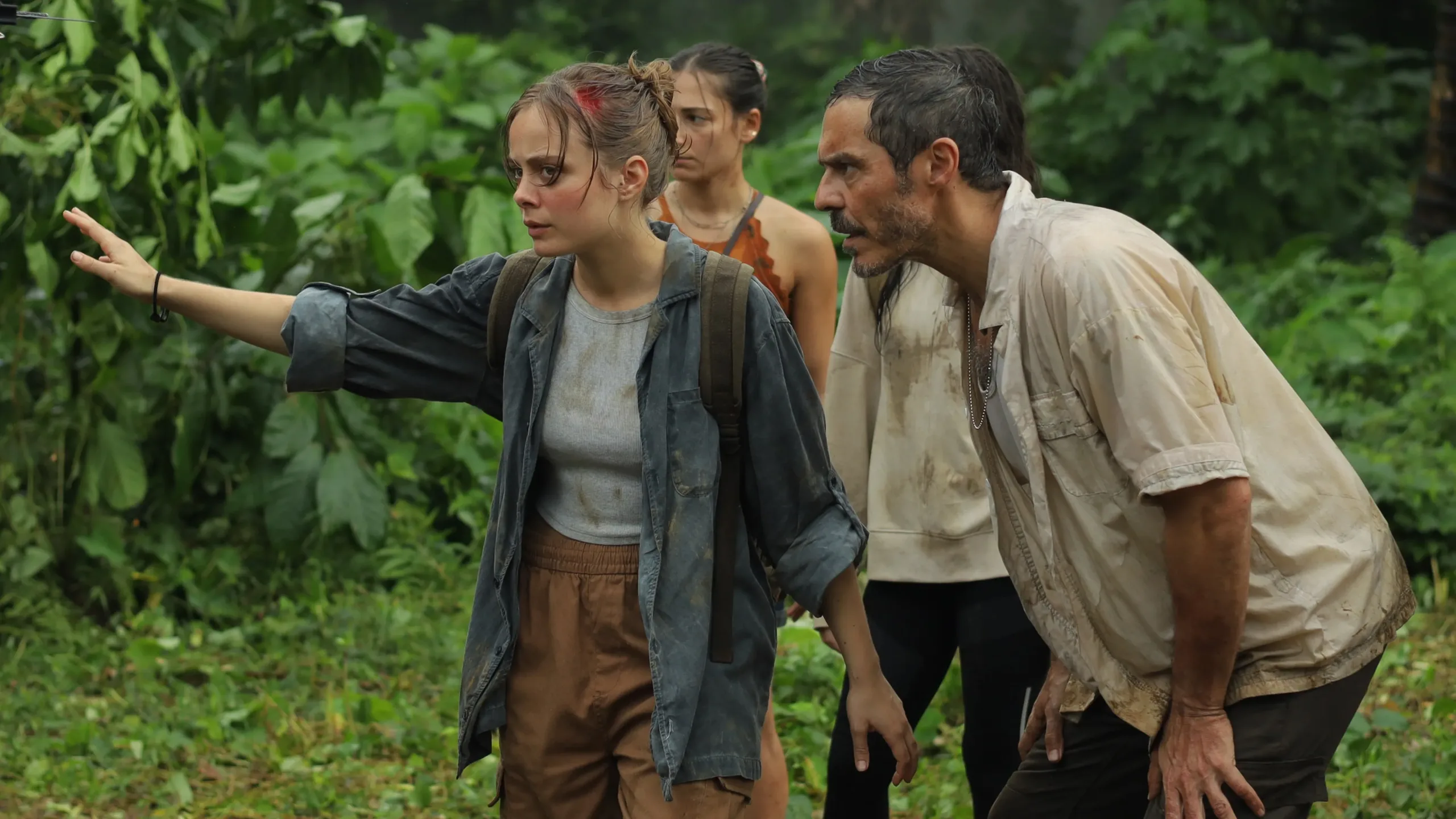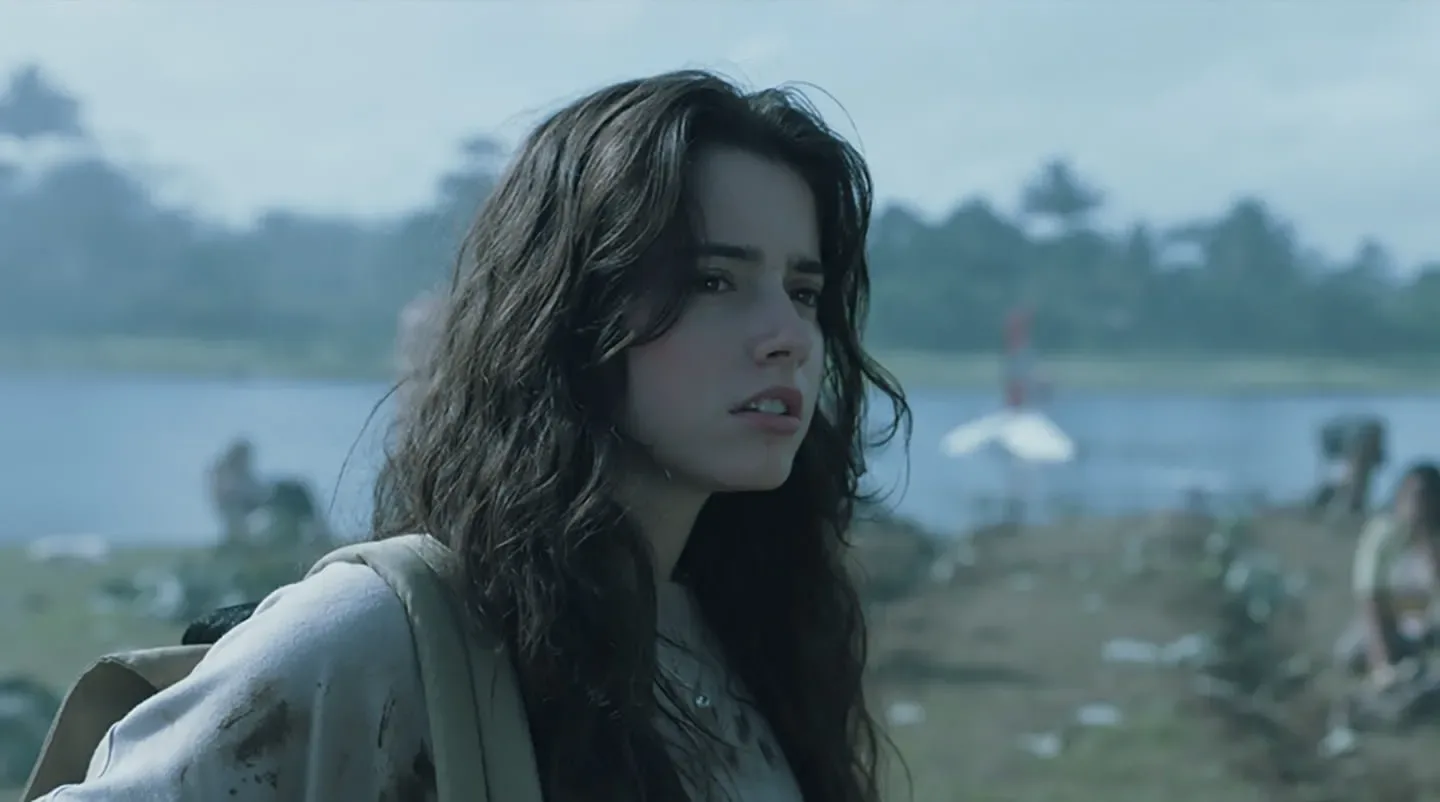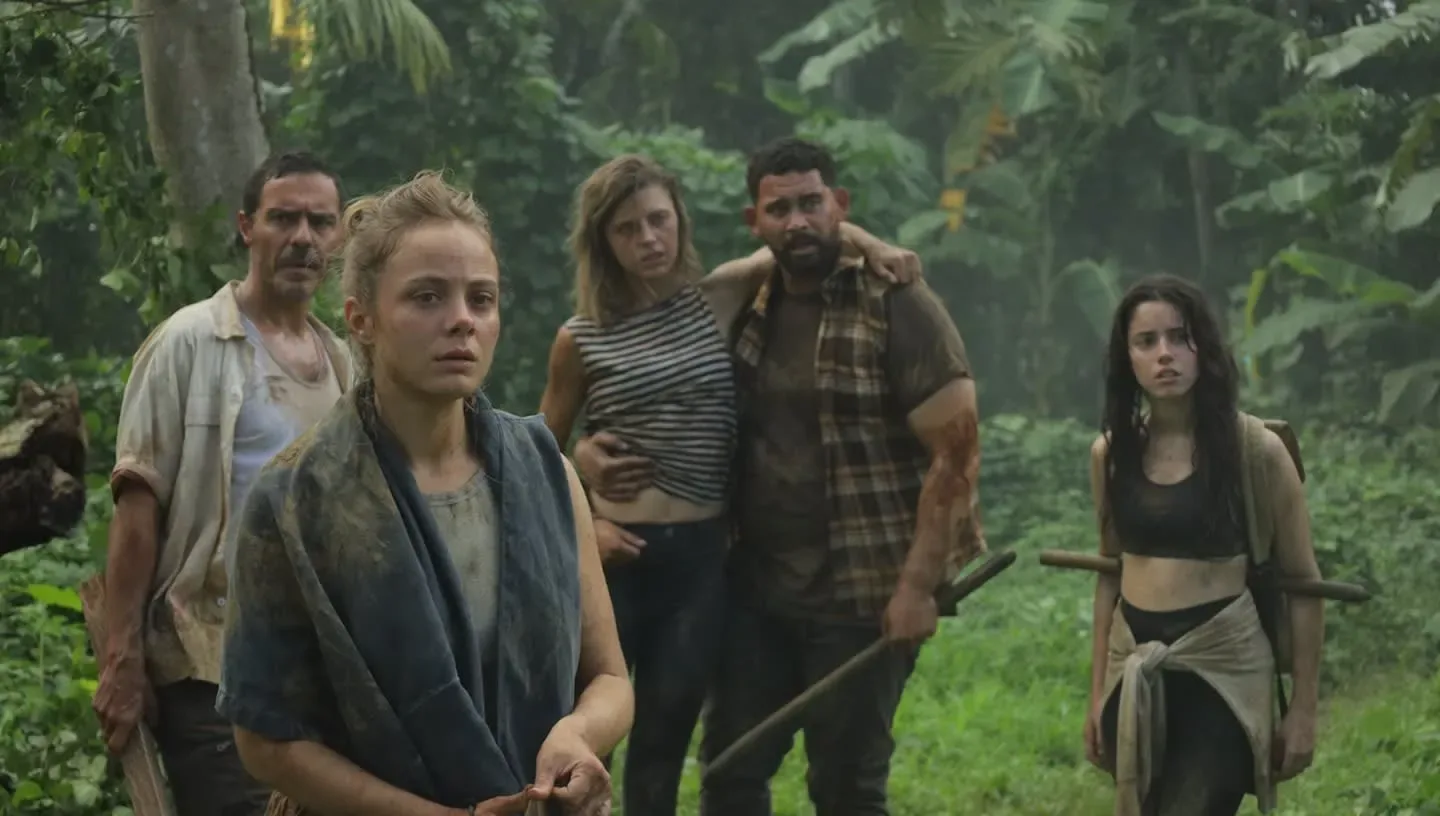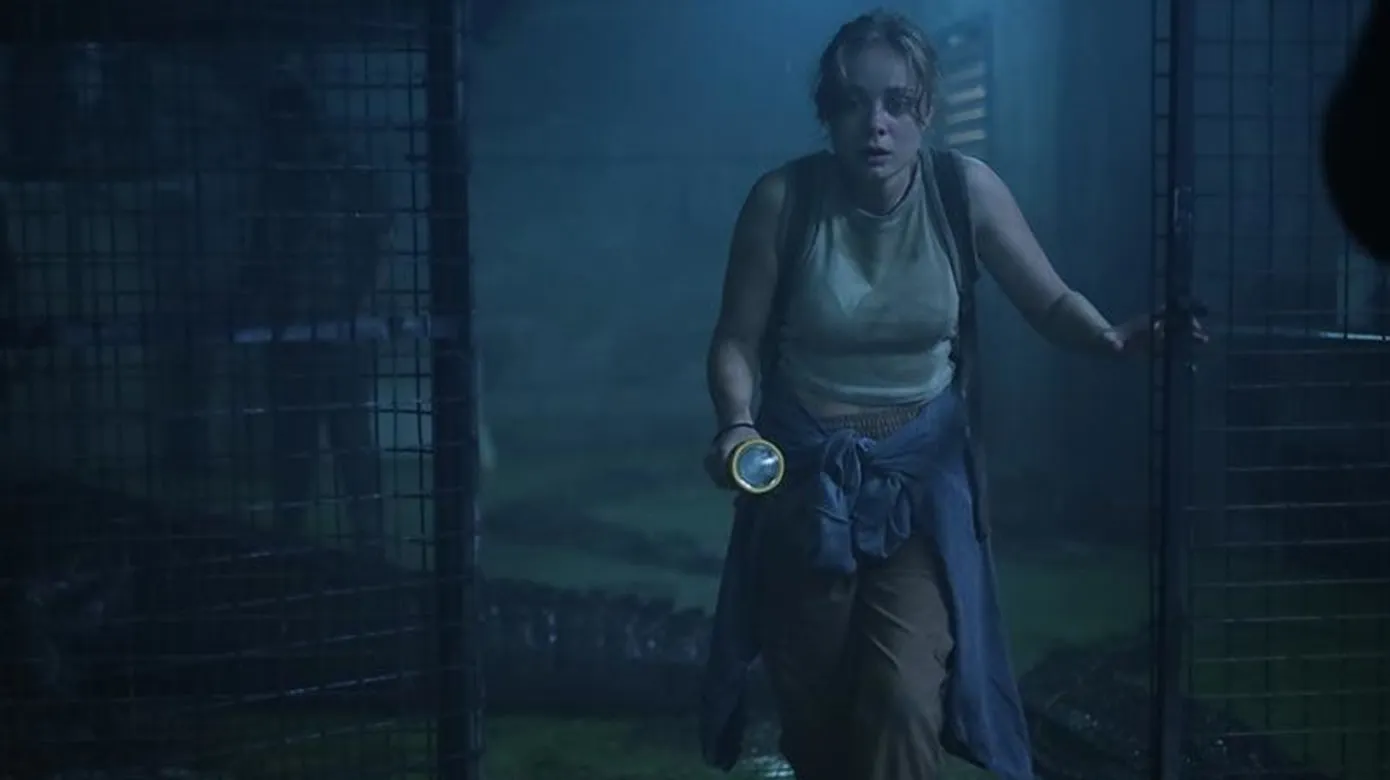The Bayou begins with an ambitious concept that pits the forces of nature against manmade substances in a Louisiana wetland setting. The film opens with a catastrophic plane crash, forcing survivors into a struggle against mutated alligators that have become unusually aggressive.
Kyle, burdened with personal loss, aims to disperse her late brother’s remains, inadvertently triggering a chain of chaotic events. The narrative shifts from a sorrowful past into a tense battle for survival, marked by a series of high-stress encounters.
Yet, the story sometimes loses its coherence; the chemical twist influencing wildlife offers a promising element that remains underdeveloped. Certain transitions feel abrupt, leaving gaps in the connection between character motivations and unfolding calamity.
The film experiments with traditional storytelling, blending tragedy with survival tension, though it occasionally leaves elements unexplained. This approach reflects a shift in filmmaking that values experimental narrative forms while aiming to entertain a broad audience.
Character Development and Performances
Kyle stands at the center of the film, carrying a personal history marked by loss and a drive to honor her brother. Her decision to spread his remains acts as a catalyst for the unfolding events, offering a window into her inner struggles and vulnerabilities.
The supporting figures—a group of friends, a contentious frenemy, and a pilot with his own quirks—are introduced with roles that hint at hidden depths and unspoken tensions. Each character carries a set of traits intended to pull the audience into the story, though some feel sketched rather than fully drawn. Their initial portrayals lay the groundwork for the conflicts ahead, suggesting that personal history intertwines with the present survival ordeal.
The cast provides moments of credibility alongside stretches that feel flat. The lead’s portrayal of grief and determination manages to capture the emotional core of the narrative, though the delivery occasionally lacks consistency. Among the supporting cast, one performance stands out for adding a touch of realism amid a cast that sometimes seems miscast.
Certain choices in accent and character behavior tend to distract, and these lapses occasionally pull the viewer out of the immersive quality the film strives to achieve. Nevertheless, there are sequences where the actors manage to infuse their roles with subtle nuances, making the tension palpable even in scenes dominated by high-stakes action.
The film makes an effort to show transformation as the characters face both inner demons and external threats. The progression from initial shock to an adaptive mode of survival is sketched out, though several arcs do not reach a fully satisfying depth.
Some backstories receive only brief attention, leaving relationships and personal growth feeling incomplete. A more thorough exploration of how personal loss influences decisions during crisis might have helped to weave individual struggles into the collective fight for survival more cohesively.
Visuals and Special Effects
The film presents an ambitious approach to the portrayal of aggressive reptiles, with digital enhancements that shine during some sequences while missing the mark in others. The digital work captures the intensity of the chase scenes, offering moments where the creatures’ menace is palpable.
At the same time, hands-on effects are employed in close-up encounters, providing a sense of physical presence and danger that the computer graphics sometimes struggle to match. There are scenes where the technical work recalls the flair seen in bigger productions, even though occasional glitches and inconsistencies distract from the intended suspense.
The visual tone is marked by a moody interplay of light and shadow, paired with a palette that mirrors the murky ambience of a humid bayou. Camera movements and framing work to set a tone of isolation and tension.
The portrayal of the swamp attempts to capture its eerie charm, though some shots reveal a gap between the film’s aspirations and the actual setting. The use of faded hues and dark imagery mirrors the narrative’s darker moods, enhancing the atmosphere without overwhelming the viewer with stark realism.
Key elements, including the wreckage of the aircraft and the atmospheric swamp scenes, are crafted with care despite budget limits. The design of these environments shows a resourceful effort to create a sense of dread and unpredictability. Practical locations and detailed props contribute to a setting that continuously reminds the viewer of the lurking threat in every shadow and ripple.
Direction, Pacing, and Screenplay
The director handles the film’s mix of horror and human drama with a clear intention to keep viewers alert and engaged. The choice to present a serious situation amid an unexpected, almost surreal, confrontation between survivors and altered wildlife creates moments that hold genuine tension.
There are scenes where the visual style and set pieces contribute to a sense of dread, and the director manages to extract emotion from chaotic events. Some decisions in staging and shot selection give the film a distinct personality, though certain sequences miss the mark, leaving a few elements feeling incomplete.
The film’s rhythm shifts between slow, atmospheric build-ups and rapid sequences that supply quick shocks. This mix sometimes causes unevenness; a few segments move quickly without allowing the audience to connect with the characters or grasp the stakes at play.
While moments of heightened suspense emerge, the overall timing can be inconsistent, causing confusion in the flow of events. The varying tempo of scenes sometimes leaves viewers questioning the importance of key events, a risk that the movie takes with its editing choices.
The written dialogue works hard to establish character and motive, though certain exchanges feel forced and lack natural warmth. The screenplay attempts to explain the unusual circumstances through brief and sometimes awkward explanations. There are passages where the language struggles to match the intensity of the visual and emotional content, and a few character interactions could have been more organic.
One can sense that the script aimed to merge personal tragedy with the chaos outside, but some scenes do not provide the clarity needed for a seamless connection between these ideas. Overall, the text tries to support the film’s dramatic shifts, yet a more careful balancing of exposition and character moments might have enhanced the narrative’s overall strength.
Sound Design and Atmosphere
The film uses sharp audio moments to raise the tension during sudden scare sequences. Hard-hitting effects punctuate scenes when danger appears, and natural sounds such as the rustling of leaves and distant water drips give life to the wet setting.
A particular sequence where a stealthy rustle turns into a sudden roar stands out as a moment of effective suspense. The film employs these elements with care, although some transitions feel off, making it hard to maintain the same level of suspense throughout.
The score carries hints of regional influences mixed with a modern rhythm that hints at my fondness for spontaneous jazz and classic European cinema. The background music supports the mood of the film, smoothly changing pace between quiet, reflective moments and faster beats during action scenes.
There are parts where the absence of music intensifies the uneasy mood, drawing attention to the natural soundscape of the bayou. The soundtrack helps bridge scenes with shifting tempos, sometimes adding an unexpected warmth to otherwise tense sequences.
The overall mix shows care in pairing sounds with visuals. There are moments when the sound effects work closely with the camera’s focus, drawing attention to details like the movement of water or the subtle approach of a threat. Some technical lapses in audio mixing can be spotted, which occasionally distract from the more seamless sequences where the audio reinforces the impact of the visual narrative.
Themes, Setting, and Overall Impact
The film tackles themes of loss and survival in the midst of chaos, with the protagonist’s personal grief playing a key role in the narrative. Trauma is explored as both a personal burden and a catalyst for the characters’ actions.
Nature appears as a formidable force, embodied by the alligators whose presence hints at the wild’s relentless power. These creatures serve as a dual symbol—representing both the literal threat and a metaphor for internal turmoil. The interference of manmade chemicals creates a disturbing twist, suggesting that human actions can upset the natural order in unforeseen ways.
The portrayal of the Louisiana wetlands strives for authenticity, capturing the humid, shadow-filled environment that is central to the film’s atmosphere. The setting works hard to convey a sense of isolation and danger, where every rustle of the wind or splash of water reminds viewers of nature’s unpredictable character.
While the film succeeds in creating a moody backdrop, some scenes miss the mark, as the environment feels only partly realized. A stronger use of on-location elements could have further enhanced the atmosphere, making the bayou a more active character in the story.
All the elements—storyline, character conflict, visual choices, and sound—come together to form a film that wears its ambitions on its sleeve. There are moments when the film captures a raw, unrefined energy reminiscent of smaller independent projects, resonating with the kind of offbeat charm seen in films by directors like Truffaut. The film offers its share of thrills, even if certain ideas remain underdeveloped. For viewers seeking a film that mixes genre thrills with a touch of experimental narrative, it stands as an entertaining option for a relaxed viewing night.
The Review
The Bayou
The Bayou takes risks with its offbeat concept and atmospheric style. Its technical merits occasionally stand out, yet uneven storytelling and shallow character arcs hold it back. Fans of experimental genre films might appreciate its moments of tension and striking visuals, though its fragmented narrative may leave some unsatisfied.
PROS
- Ambitious concept
- Striking atmosphere
CONS
- Uneven storytelling
- Shallow character development
- Inconsistent pacing
- Underdeveloped plot elements
- Occasional technical glitches




















































